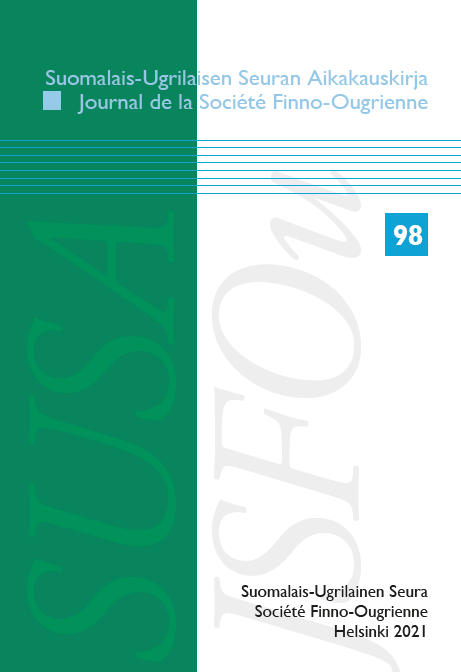Skolt Saami and Inari Saami seine fishing grounds’ names: Looking for naming cultures
nimeämiskulttuureja etsimässä
DOI:
https://doi.org/10.33340/susa.95370Keywords:
paikannimet, onomastiikka, inarinsaame, koltansaame, apajannimet, nuottakalastusAbstract
In this article the structure, formation and naming reasons of Inari and Skolt Saami seine fishing grounds’ names are analyzed and an overview of the history and the vocabulary connected to seine fishing are discussed. The material consists of samples of 204 Inari Saami names from the municipality of Inari, Finland and 161 names from Suõʹnnʼjel Saami village in Pechenga, present day Russia. The used method is an applied version of the syntactic-semantic classification model developed originally by Kurt Zilliacus and Eero Kiviniemi during 1960’s and 70’s. The applicability of the method on Saami place name materials is critically discussed. The results show that Inari and Skolt Saami place name grammars that regulate the structure and formation of the names differ from one another but there are also many similarities. In Skolt Saami names a clearly prototypic structure model can be found: it includes two syntactic parts (a modifier part and a generic part) and ends to word laapp ‘fishing ground’. The Skolt Saami names are on average one word longer than in Inari Saami. The mentioned type can be found in Inari Saami but there is also a variety of other types that are as common as that. The structure types of Inari Saami fishing grounds’ names resemble the types of houses’ names. The naming reasons, on the other hand, are mostly similar. The most popular reason in both languages is to situate the named place in the surrounding landscape.





